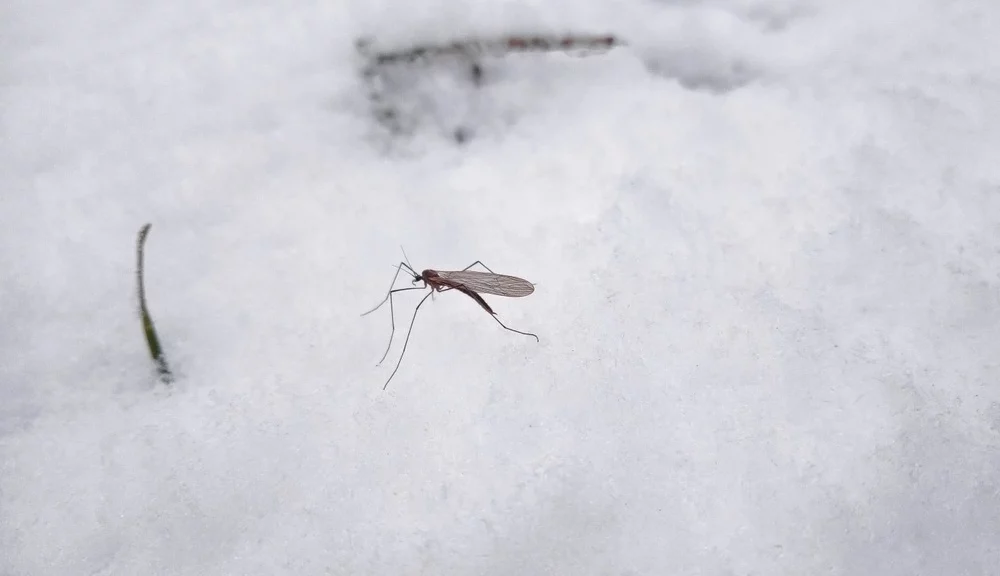Overwintering Insects — How Do Insects Survive the Winter?

Overwintering Insects — How Do Insects Survive the Winter?
Winter is a challenging time for all forms of life. We bring precious plants indoors to protect them from winter’s chill. Some people retreat to warmer climates, while others turn up the thermostat and bundle up in warmer clothes. Birds, animals, and insects face the same choices, with some migrating and others sheltering in place. Some even go dormant to pass the winter in slumber. Let’s take a look at overwintering insects to see how these winter pests survive the cold. (Spoiler alert: some of them come indoors to spend the winter in your home!)
What Is Overwintering?
Overwintering is the method a living organism employs to survive the winter. Your grandparents might overwinter in Miami. Many plants and animals overwinter by going dormant to sleep through the cold months. Your pets overwinter by spending more time indoors, where it’s warm. Insects also overwinter, and they do so by migrating, going dormant, or moving into your home and outbuildings.
When Insects “Hibernate”
Many overwintering insects enter a state akin to hibernation called diapause. In this condition, their metabolic rates slow dramatically to conserve energy. During diapause, insects don’t eat, grow, or reproduce. They are simply surviving until the return of warmer weather.
Overwintering insects typically don’t bite people or do property damage during winter. They focus entirely on surviving the winter chill. But winter can be an excellent time to use pest control methods against slower-moving pests that often cluster together to conserve body heat and moisture. Typically, the overwintering pests of greatest concern are those seeking out the warmth of our homes to ride out the winter. Imagine giving winter shelter to the same bugs that bite and bedevil you spring through fall.
Types of Overwintering Pests
Technically, all pests overwinter in that they have strategies to survive the season’s cold. But some are more likely than others to seek shelter in our homes. Overwintering insects that see your home as a cold-weather vacation spot include:
- Stink bugs
- Asian lady beetles
- Boxelder bugs
- Cluster flies
- Carpenter ants
- Spiders
- Mosquitoes
Of course, small mammals like mice and rats can also be considered overwintering pests. Most overwintering insects that shelter in our homes seek out warm, protected areas like the attic, crawl spaces, and the spaces within walls. Carpenter ants, however, prefer to nest in moist, decaying wood and favor spots with water damage or leaky pipes or in damp basements. Spiders will also make use of quiet corners inside the home, and mosquitoes seek dark spaces in basements and garages when they overwinter indoors.
Where Do Insects Go in the Winter?
While some insects migrate to warmer climates, and others seek shelter in our homes, most overwintering insects burrow deep into the soil, nest inside fallen logs or plant debris, or hide under the bark of trees. They seek out small niches in their habitat that are likely to remain undisturbed to shelter from the cold. Some overwintering pests lay eggs that survive the winter while the adults die off. These include some species of:
- Mosquitoes
- Aphids
- Grasshoppers
- Beetles
- Stink bugs
- Fruit flies
Others hide out as adults, larvae, or even pupae, ready to continue their growth and development when warmth returns in the spring.
While most winter pests hide as individuals, some species gather in great numbers to share and conserve body heat and moisture.
The following species overwinter in great clusters in or around our homes and outbuildings:
- Asian lady beetles
- Stink bugs
- Cluster flies
- Boxelder bugs
- Wasps
While certainly not considered a pest, monarch butterflies are the most extraordinary of overwintering insects. They migrate in enormous groups called “flutters” that fly a staggering 3,000 miles to key habitats in Mexico. There, they huddle together in such enormous clusters that they can weigh down the branches of trees as tall as 80 to 160 feet.
Ways to Keep Pests That Overwinter Out of Residences
There are a number of steps you can take to keep overwintering insects out of your home. Focus on securing entry points and denying the critters the habitat they seek.
Seal Gaps and Repair Screens
Overwintering pests enter the home through small tears in window screens and small gaps in attic walls and around the openings that allow pipes and wires to pass through walls. Look for these openings and seal them with screen, caulk, or expandable polyurethane foam.
Screen Chimney Vents
A well-ventilated chimney is essential for the safe operation of your fireplace. But it is also an inviting entrance to all manner of overwintering pests. Inspect your chimney screen and replace a vinyl screen with a metal one that won’t tear or be chewed through.
Store Firewood Away from the Home
Stacked firewood makes a cozy hideaway from many overwintering insects. If it is stored too close to the house, it serves as an easy entryway to your home. Instead, store it at least 20 feet away, up off the ground, to allow airflow underneath it. Plan to burn any wood you bring in immediately so if there are any hitchhikers, they won’t get a chance to settle into your home.
Turn of the Taps
In addition to warmth, overwintering insects need water to survive. It’s more important than food to them. Leaky faucets and spilled water can provide a lifeline to indoor insects and an invitation to others to join them. Repair any leaks and clear blocked gutters and any places where water collects. Don’t leave dirty dishes soaking in water, and squeeze out wet sponges.
Overwintering Pest Control Treatment
Trust the pros at your local Mosquito Joe® for effective pest control to keep your home free from overwintering insects and other uninvited guests like mice and rats. All our work is backed by the Neighborly Done Right Promise™ and Mosquito Joe Guarantee because we understand that the job isn’t done until it’s done right.
Request a free quote today and live pest-free from tomorrow on.



